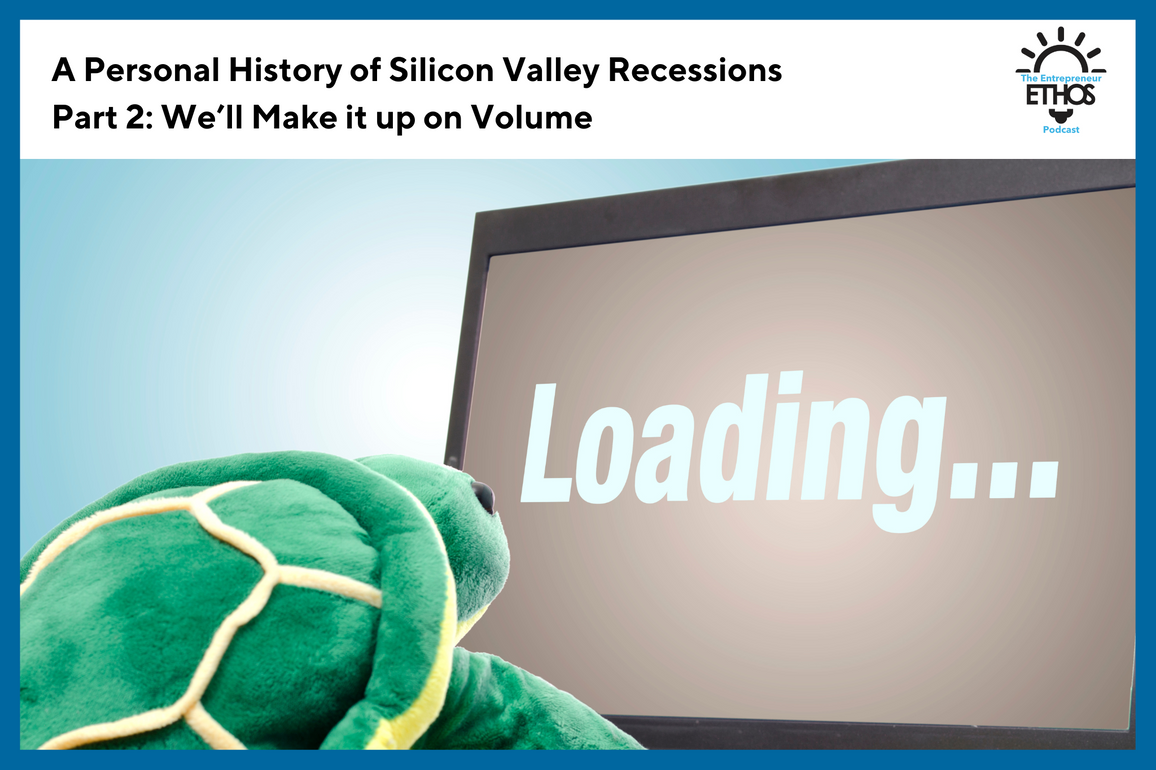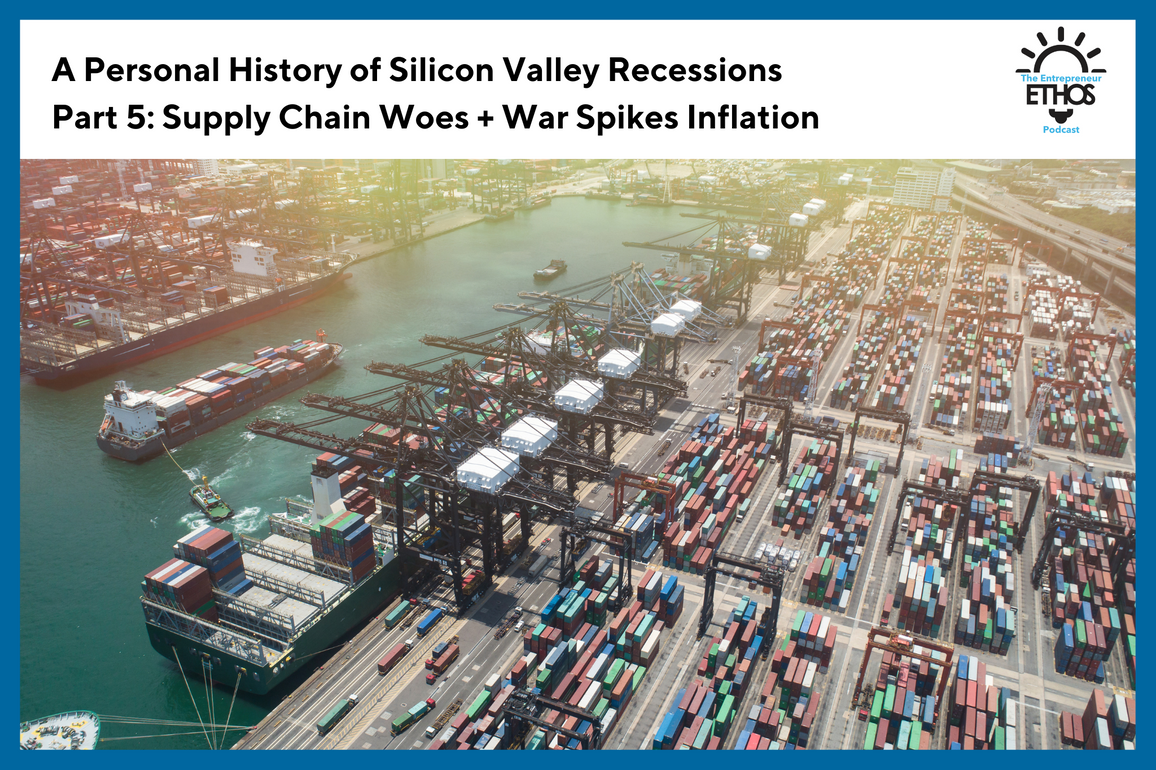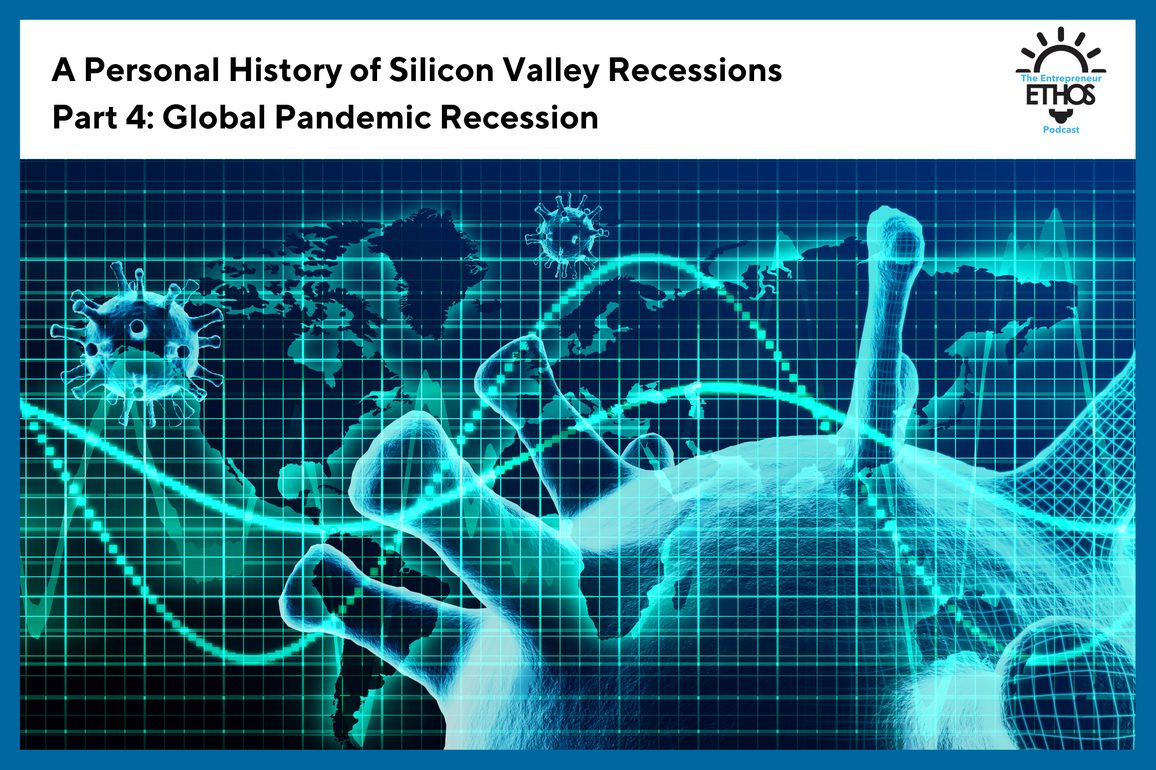Part 2: We'll Make it Up on Volume

Hello everyone and welcome back to this miniseries I’m doing called A Personal History of Silicon Valley Recessions.
This is a five part miniseries of what it was like to go through two (and now starting three) recessions in Silicon Valley.
This is part two titled We’ll Make it up on Volume and it’s about the lead up and bursting of the dot com bubble.
If you’re just tuning in, I’d highly recommend listening to part 1 so you get some context as to my perspective on this.
So the dot com bubble.
I’d say the acceleration of the bubble started in 1999 when the big “I” Internet was really starting to take off.
At that time, I was a Cypress Semiconductor, which made all sorts of chips for things like Internet Routers and USB mice and keyboards to name a few.
Headquartered in San Jose, CA it was right across the street from Cisco Systems, which was one of the companies making all those routers to power the Internet.
When I joined, Cypress was on a tear. We could not keep up with demand for all the chips that were needed to build all the routers and computers to bring people online.
Today you hear about chip shortages because of lockdowns in China from the pandemic and supply chain shortages. Those certainly contribute for sure but one thing to keep in mind is that it’s hard to bring chip fabs on and off line to meet demand.
Heard of Moore’s Law?
That also plays a part since roughly every 18 months, a new technology node gets developed to double the amount of transistors in the same area. This is the reason why electronics get cheaper over time - there is always a next generation process node that is faster and cheaper.
During the dot com bubble ramp up, fueled by startups building the internet, Cypress was printing money quarter after quarter starting roughly in April of 1999 when the stock took off from $10 dollars up to its peak of $58 in July of 2000.
Those were glory days. Each quarter our stock ups went up, the bonus went up, and everyone was fat, dumb, and happy.
No one ever dreamed of what was to come. Well maybe someone but not me.
We survived Y2K.
We’re building the freaking Internet.
What could go wrong?
The Hard Thing About Hard Things
One of the best books on what happened during this time is Ben Horowitz’s The Hard Thing About Hard Things.
At the time, Ben was CEO of Loudcloud, which offered infrastructure and application hosting services to enterprise and Internet customers. Basically the precursor to cloud computing today.
So remember when I told you that Cypress sold chips to Cisco to make routers, etc. Well, Cisco sold to folks like Loudcloud. Perfect. Well not exactly.
Remember when this was.
The ramp up to the bubble started in the late 1990’s because people were freaking out about Y2K. It may sound strange today but there was a real fear that on January 1st, 2000, all of the legacy computer systems would stop working or rather they would think that 2000 was actually 1900. This massive build out started to commoditize the Internet, which meant it would be a race to the bottom.
Another factor was that a metric ton of VC money was flowing into startups building the Internet starting in 1998 and peaking in 2000. The joke around the Valley was that if you had a 14 slide PowerPoint deck that had Internet in it, you’d get $1M no questions asked.
Does that sound familiar to my blockchain crypto friends?
The icing on the cake or rather the rocket fuel that accelerated the bubble was the IPO of Netscape, which is touted as “the start of Year One in the Online era.”
It made so much money on day one that all those VC’s saw that this whole dot com thing could make a ton of money. So they pumped more in.
The problem that something so fundamental to business that it still shocks me to this day even though I totally bought into the hype.
NONE of these dot com companies made money.
They had sales but no profits. The joke was that “we’ll make it up on volume.”
Well, zero profit times a billion of whatever magical volume you want to come up with is still zero.
Still, people believed right up until the whole thing melted down one day.
I remember it well.
It was one of our quarterly company meetings where TJ Rodgers, CEO and founder of Cypress, would spend the first half of our 2 hour company all hands talking about the Green Bay Packers and his vineyard, Clos de la Tech.
This meeting was different.
Instead of starting with the latest prospects for the Clos de la Tech harvest or how Green Bay would crush the Vikings next season, he put up one chart.
It was our quarterly sales both actual and projected for the past 2 years.
The ramp was impressive until you got to the coming quarter where it projected that our sales would go NEGATIVE.
Let me repeat that.
We were projected to have NEGATIVE sales.
It’s complicated how that works but it has to do with the capital and lead times for building chips.
That was the Q3 of 2000 meeting and those projections were for Q4.
Apparently all of our customers canceled all their orders and we would have to give back their deposit (or something like that).
That meeting started a series of layoffs similar to what Ben talks about in his book. It was brutal.
I had to personally lay off six people. It sucks at a level of suck that was downright depressing.
What it taught me is that good people get laid off when you have to cut past the bone to survive.
You may think that that whole Reduction In Force (RIF) is a fair and balanced process. Well, you’d be wrong.
It’s political and petty. Folks are wrapped up in protecting their empires and see opportunities for power grabs. Those that try to make it fair just get crushed.
So if you got laid off, which eventually I did from Cypress, try not to take it personally but rather as an opportunity to build your own thing or pivot quickly to a new opportunity.
Thanks for listening to part two of A Personal History of Silicon Valley Recessions, We’ll Make it up on Volume.
Stay tuned for part three when I’ll let you know what it felt like during the real estate boom and bust that led to the 2008 recession.
Until next time, chin up, shoulder back, and keep grinding.

